
Stamen Design data visualization project in collaboration with design technologists: Alan McConchie and Eric Gelinas.
My role: Visual and User Experience design for the map data visualizations - Audubon Climate Report.
We worked with Mule Design on Audubon's new mobile and desktop website design and development.
Stamen Blog Post
Giphy
Press:
New York Times
Wired
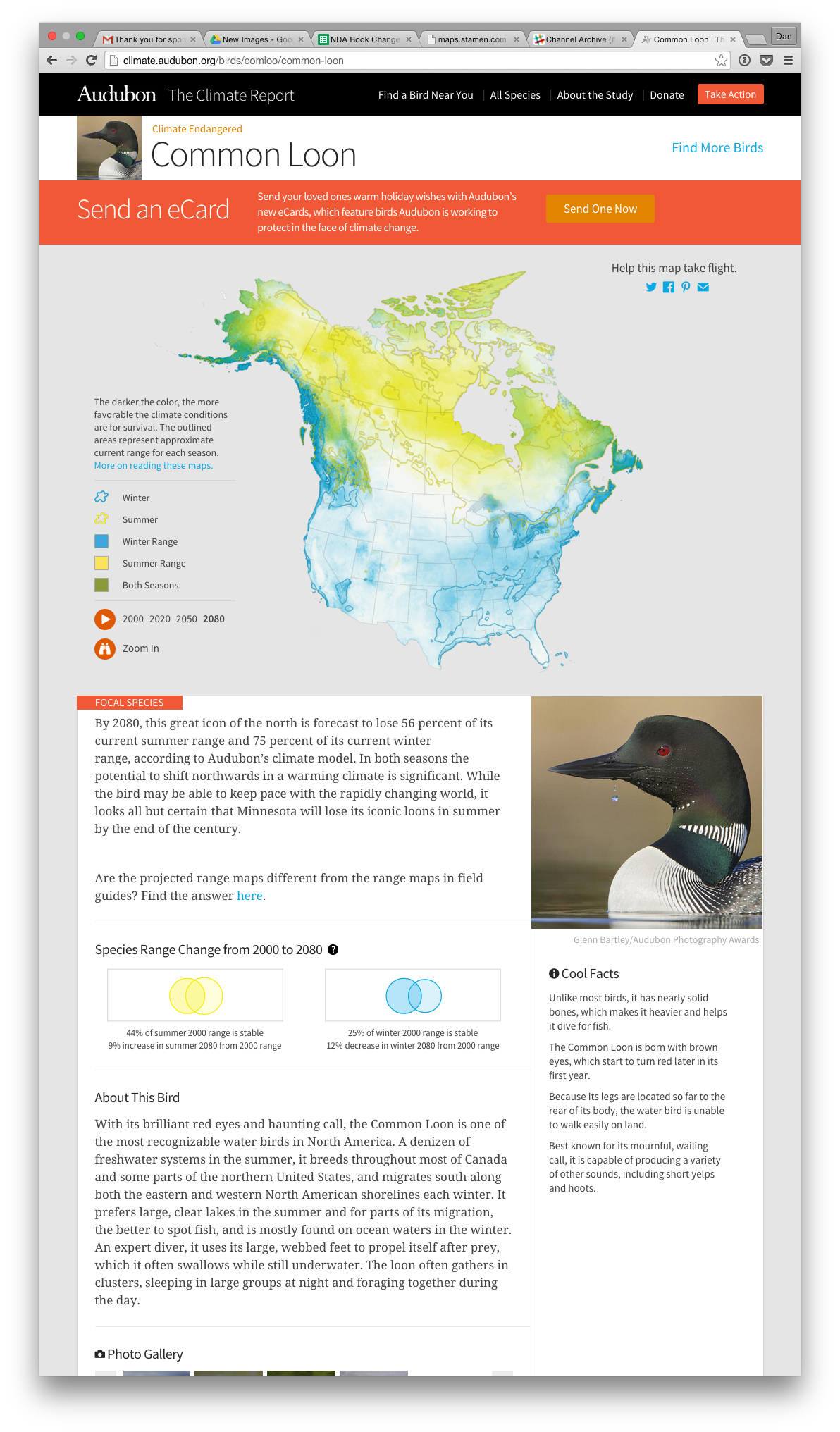
Climate change, though we know it’s there, is a hard thing to see: it’s slow, it’s invisible, and if you don’t know what you’re looking for, then you might not even miss it once it's gone.
Birds, however, are often hard to miss: they can be loud, bright, beautiful, strange. It turns out that by watching where their flight ranges are shifting now, we can get some idea about where they are going, which points to some likely patterns of climate change and how it will affect an ecosystem in the not-so-distant future.
This is precisely the kind of data that the Audubon Society has been collecting extensively about North American bird flight range changes, and in this project, we have helped them to visualize it. Working with data from “the broadest and most detailed study of its kind,” the visualizations we’ve made together, with a lovely site designed by our friends at Mule, collectively comprise “the closest thing we have to a field guide to the future of North American birds.”
Hundreds of thousands of observations (drawn from the long-running citizen science projects the North American Breeding Bird Survey and the Christmas Bird Count) combined with sophisticated climate modeling create these predictions of where certain birds will be, when. Suddenly we have a clearer idea of where each specific bird will go, not just that they will all travel north. [Waves hands to indicate broad area of northernness.]
The dataset for all 314 birds contained both summer and winter range predictions. Our main challenge was to make this data engaging for the public. For us, this meant making the visualizations easy to understand, as well as easy to share.
Realizing that individual animations would make it easiest to see the change, we decided to make a GIF for each bird.
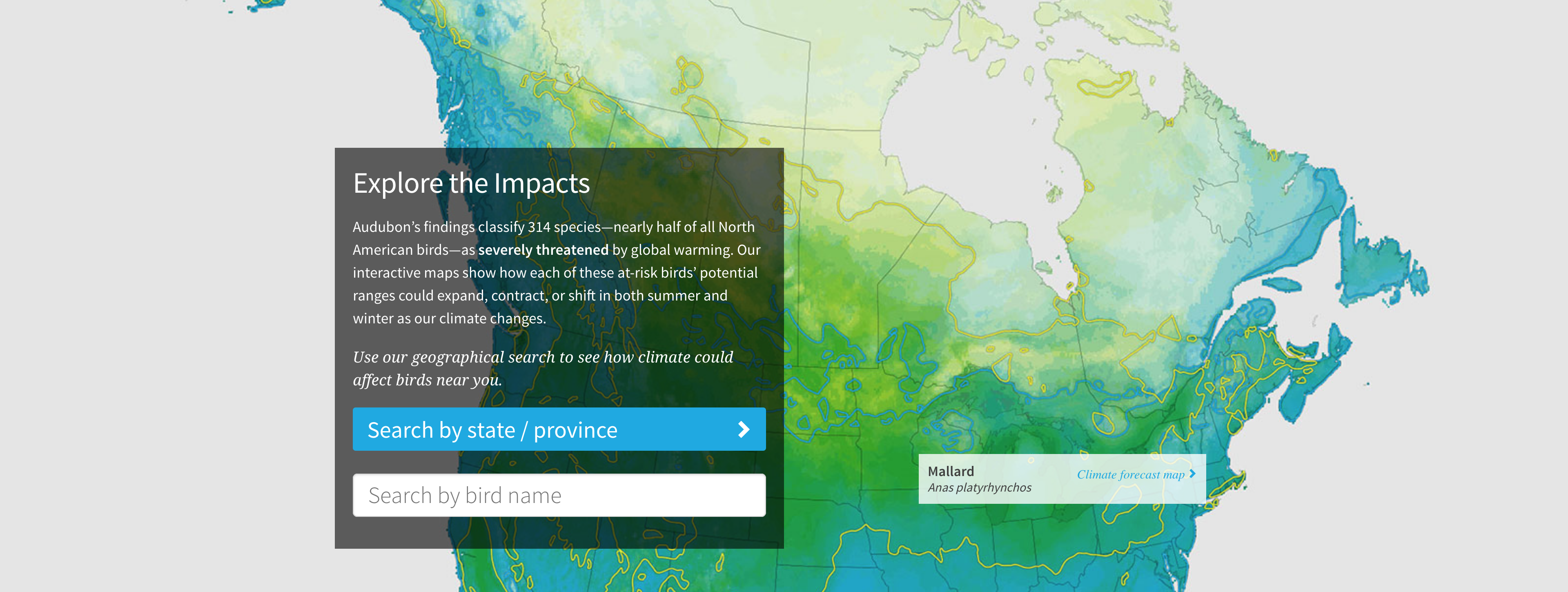
For each year in our dataset — 2000, 2020, 2050, and 2080 — we created a shifting cloud of movement showing the probability of where the birds’ range is now and where it’s likely headed in the future. Yellow represents summer, blue, winter, and green is a combination of both seasons. The yellow and blue outlines mark the 2000 summer and winter ranges to make it easy to see how things change over time.
We rendered more than 1200 maps (four years of data for each of the 300+ birds).
In addition to the maps, we made two Venn diagrams for each bird as well. These overlapping circles show both the area of the potential 2080 range, but also how much the current range overlaps with the future range. That’s crucial. Some birds (like the Hooded Oriole) might have big increases in theoretical range, but if there’s no overlap, we can’t be sure whether the bird can take advantage of that new range.
In some cases there is a lot of overlap, like with the Mallard:
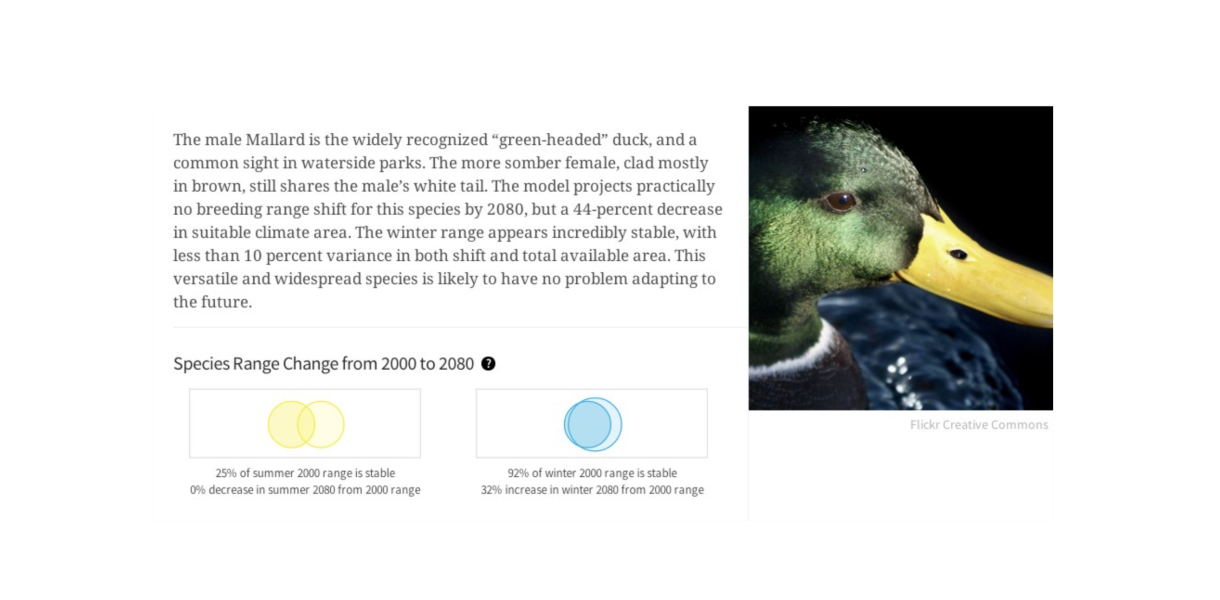
And in some cases very little or none, as with Allen’s hummingbird:
…and the Cerulean Warbler:
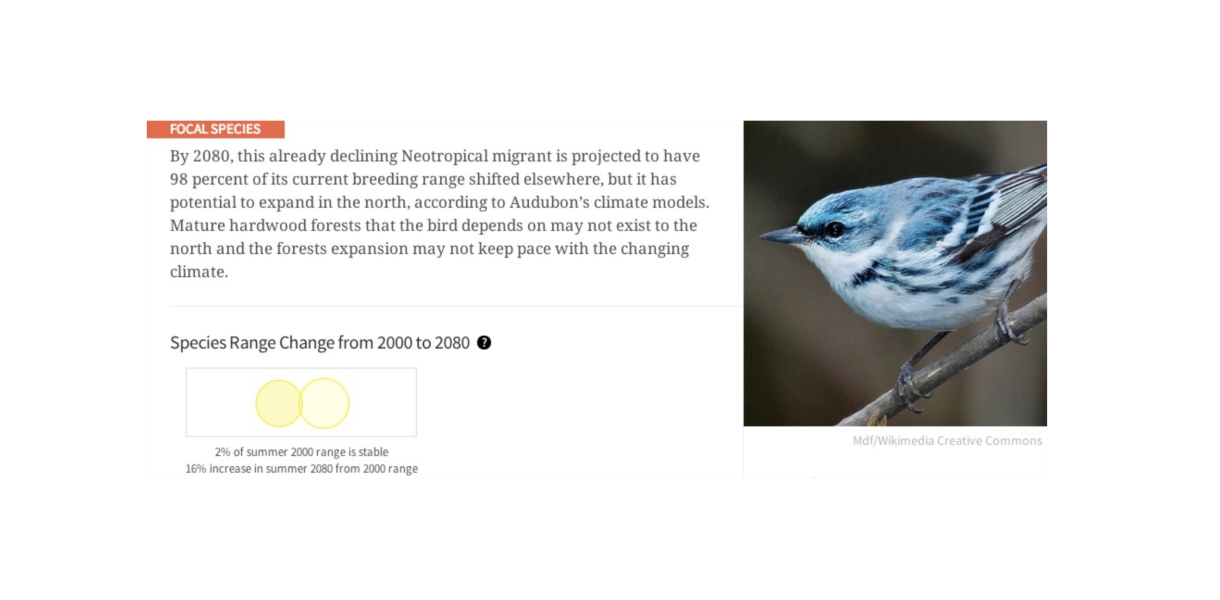
As sobering as this work has been to create, we thoroughly enjoyed working with both Mule and Audubon to create it.
To learn more and take action, visit climate.audubon.org. Find your favorite map and share it with your friends! Or better yet, go outside and find a bird that you might not see again in the next 20–80 years.
Mobile Designs:
Data Visualizations in the real world! - Audubon Installation Example at the Whatcom Museum in Bellingham, WA.
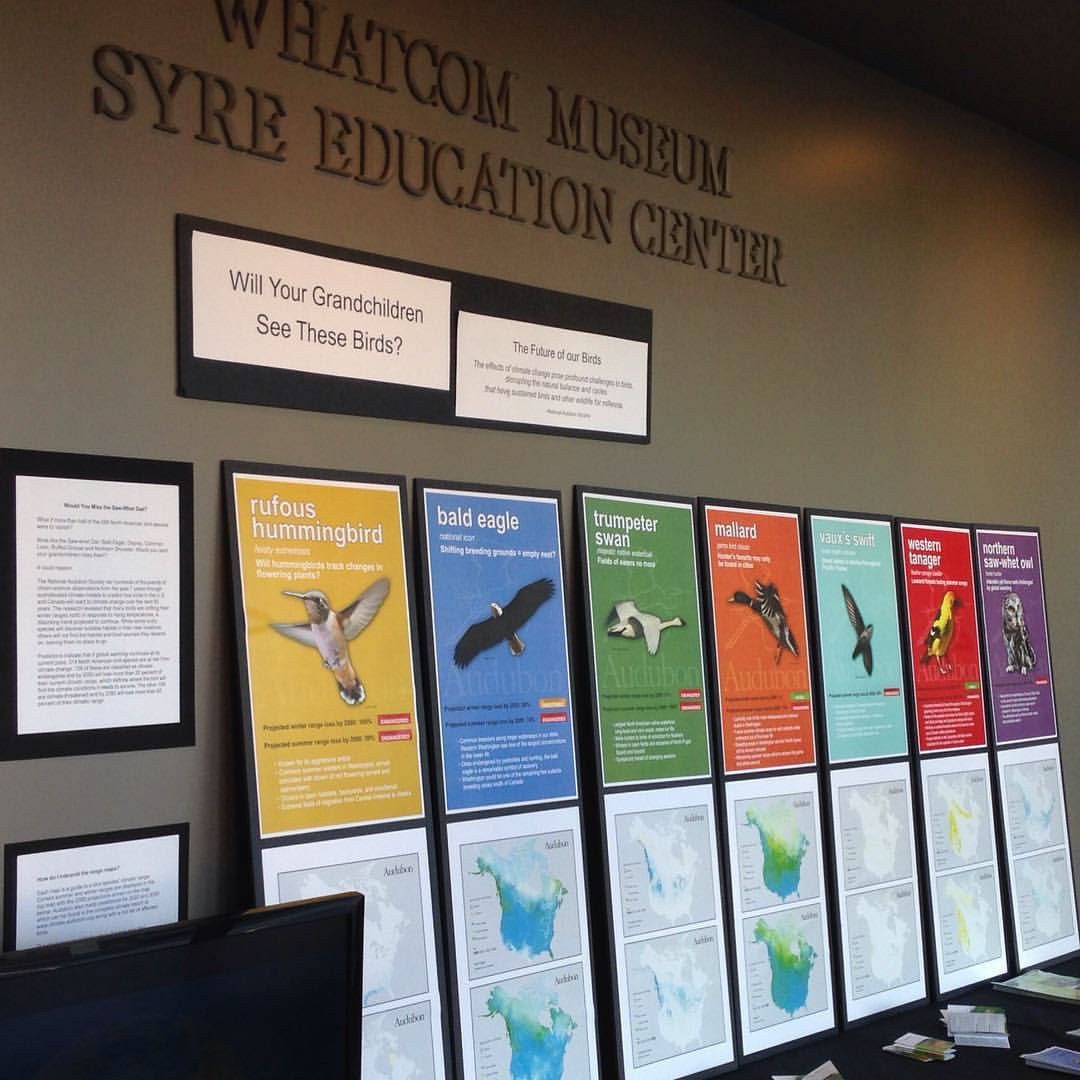
Selected Works

Crunchbase Chrome ExtensionProduct Design
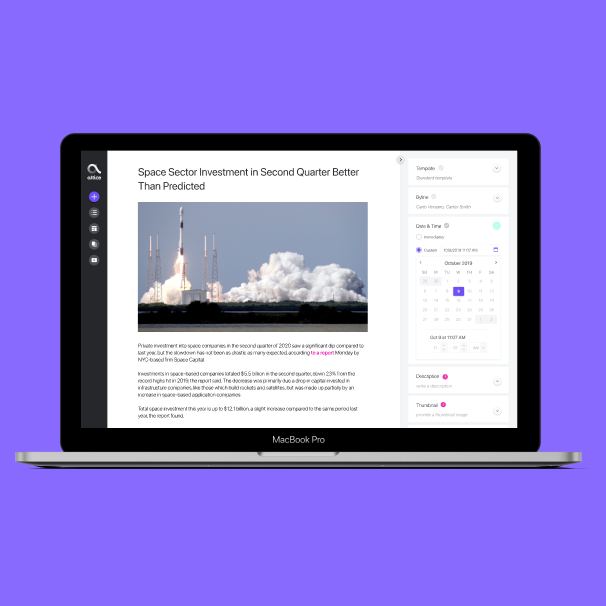
Cheddar + News12 CMSProduct Design
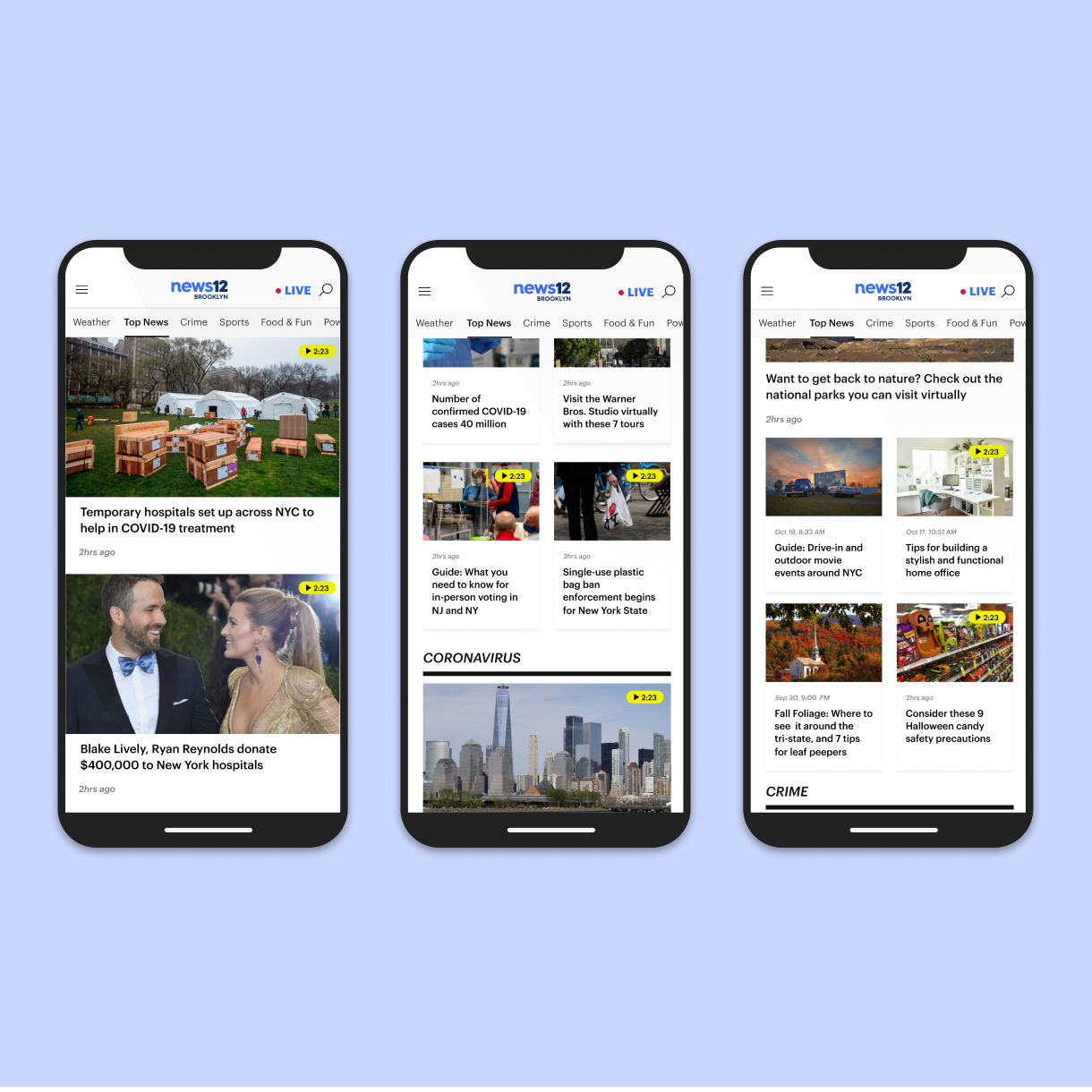
News12 Web & App ExperienceProduct Design
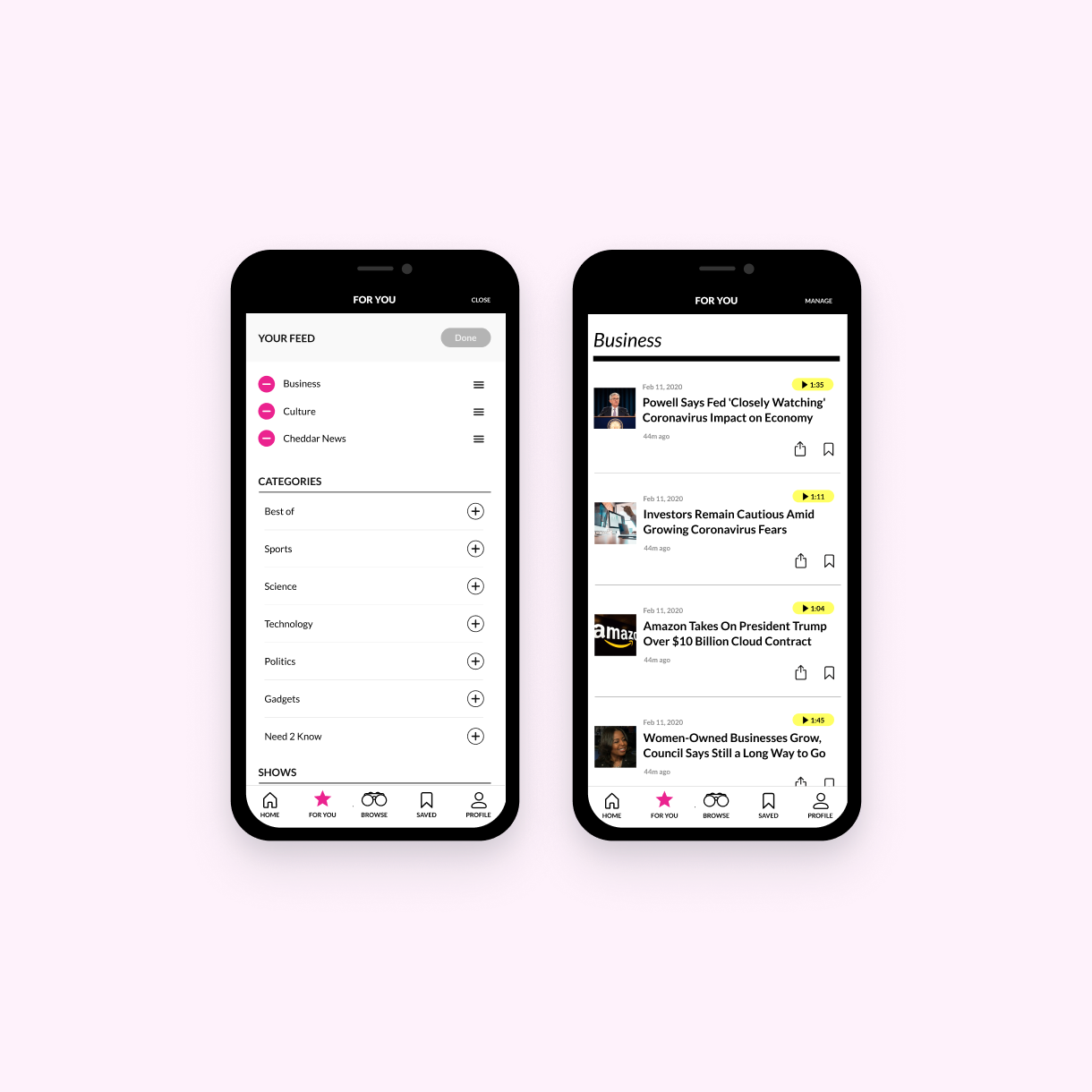
Cheddar Content PersonalizationProduct Design

Cheddar tvOS experienceProduct Design

Cheddar.comUI Design
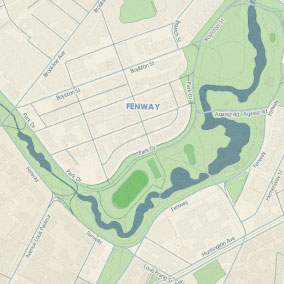
Pinterest Place PinsUI / UX

Visually WorkspaceUI / UX

Audubon Climate ReportUI / UX
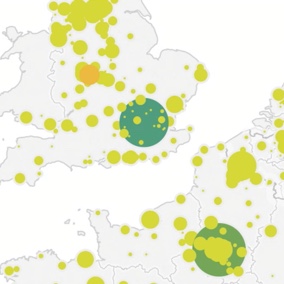
Tableau BasemapsUI Design
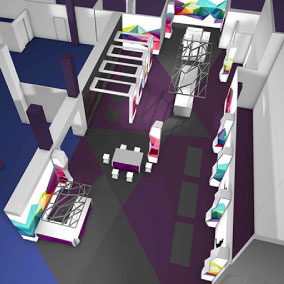
Body Metrics, Tech MuseumExperience Design
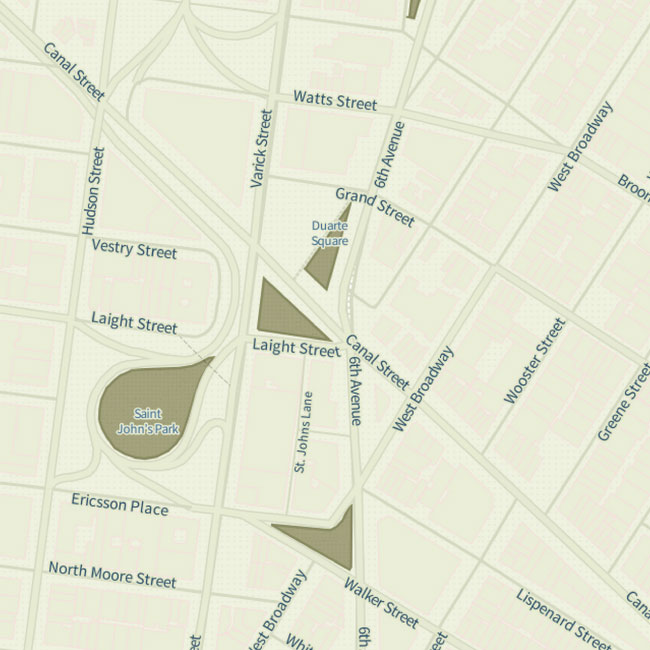
Mapzen UI DesignUI Design
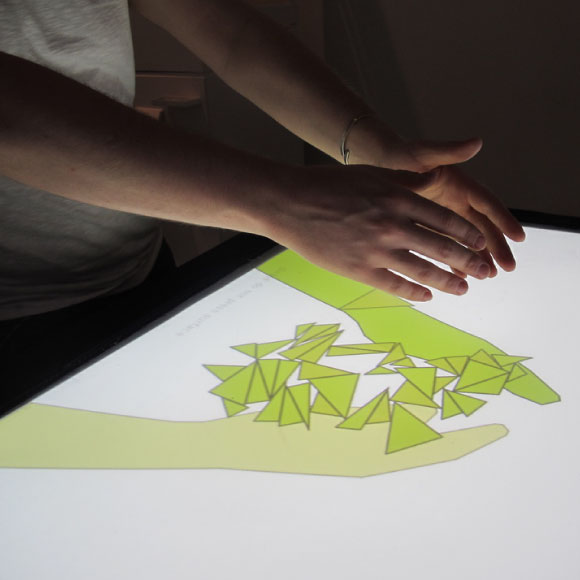
Little ShadowsMFA Design +Technology Thesis
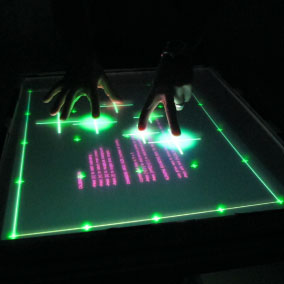
DSI TableParsons
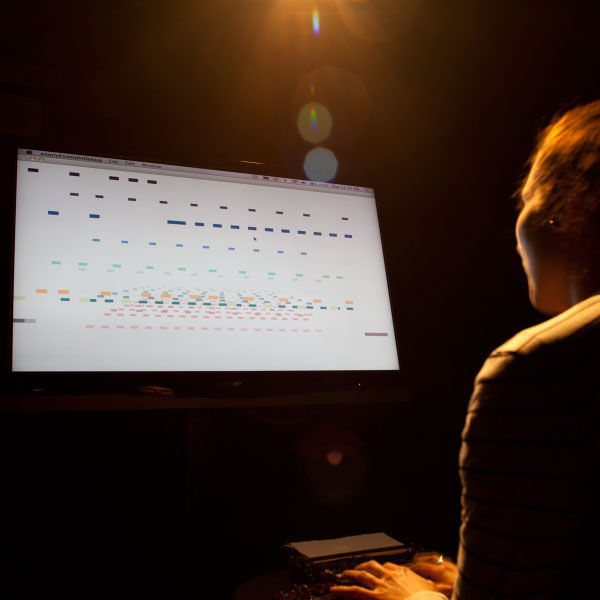
Midi TypewriterParsons MFA D+T

IllustrationProject type
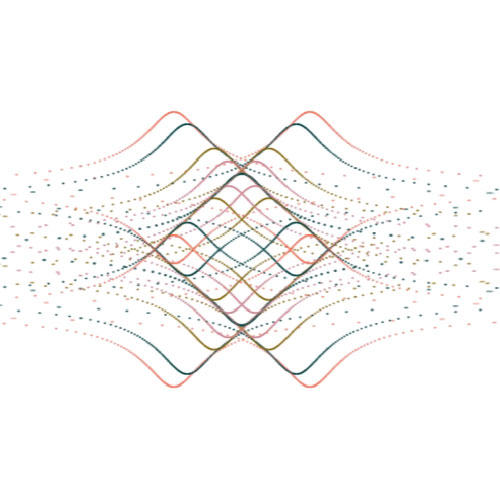
Algorithmic AnimationOpenframeworks
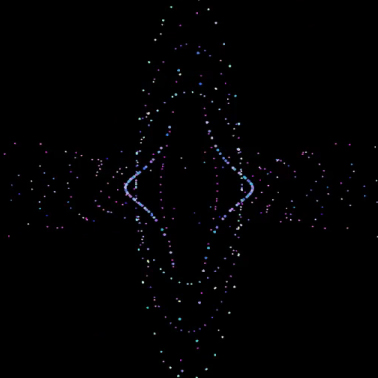
John WhitneyOpenframeworks











